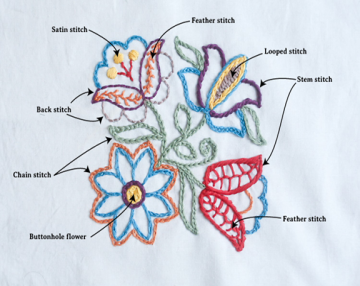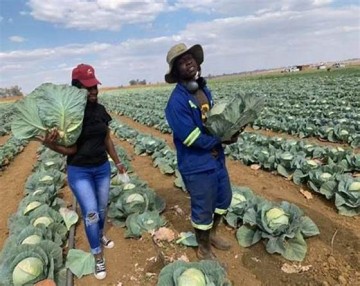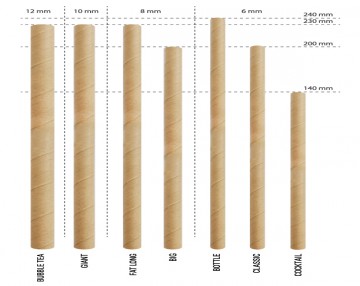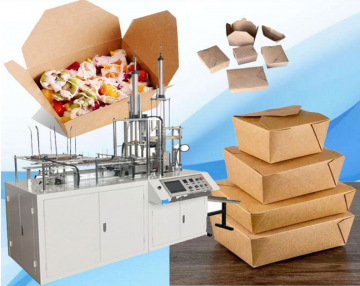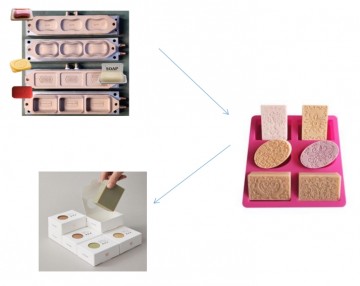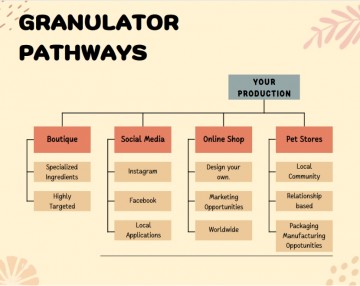Commercial Cultivating Tools
This is one of the best article for advance farming tools, edited by soil assocition organization, and pasted here by Mr. Aibo of kichuguu team, for any question or dicsucion about availability and the usage of the tools please contact "author" at HERE.
Machinery Guide: cultivation
Ploughs
Furrow non reversible
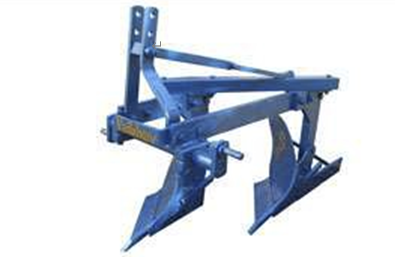
Furrow reversible
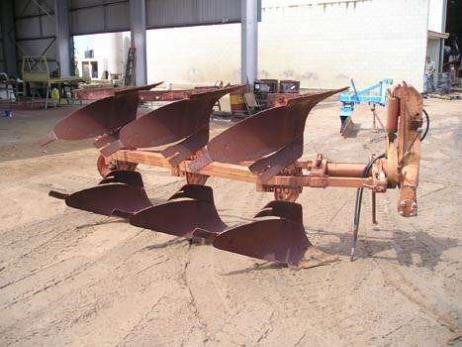
Furrow reversible
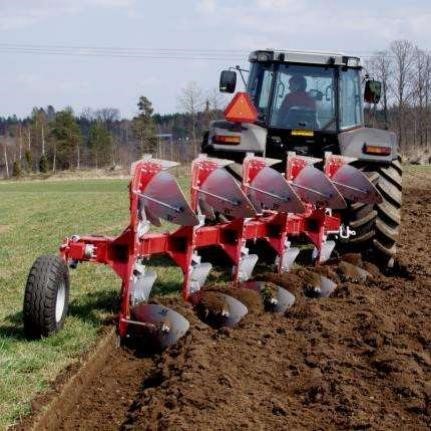
The Reversible Plough is an innovative and versatile agricultural implement that is directly mounted to a tractor. It is a hydraulically operated basic implement that is primarily used for land preparation. This plough is particularly useful in challenging conditions, such as hard and dry, trashy, and stumpy lands, as well as in soil where scouring is a problem.
One of the notable advantages of the reversible plough is its heavy-duty clearance, which allows it to operate efficiently under heavy crop residuals. Furthermore, the plough is designed to work on both the left and right side of the tractor, and it automatically reverses its position while ploughing. As a result, this reduces the time and diesel consumption needed for the ploughing operation.
The reversible plough consists of two mouldboard ploughs that are mounted back-to-back, with one turning to the right and the other to the left. While one plough is working the land, the other is carried upside-down in the air. At the end of each row, the paired ploughs are turned over, so the other can be used, resulting in consistent and efficient field direction. Overall, the reversible plough is an excellent investment for farmers looking to optimize their land preparation operations.
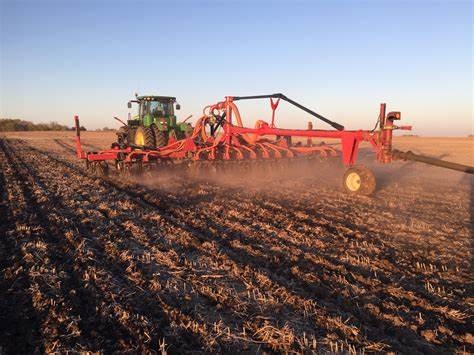
Furrow press (mounted behind plough)



Close up to the older furrow press

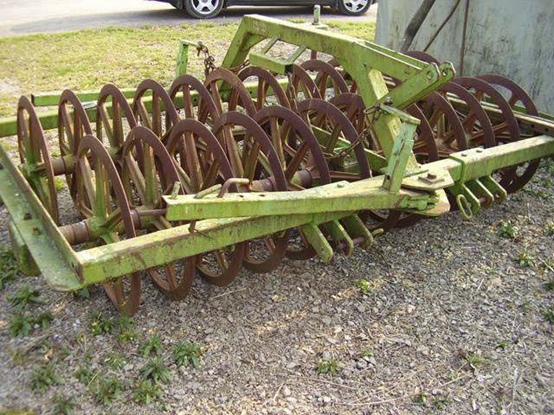

TINES
Spring Tines
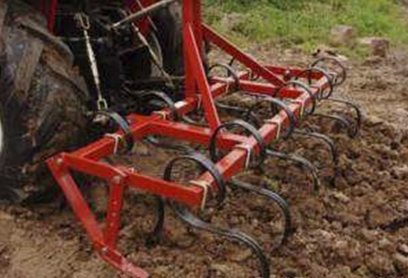

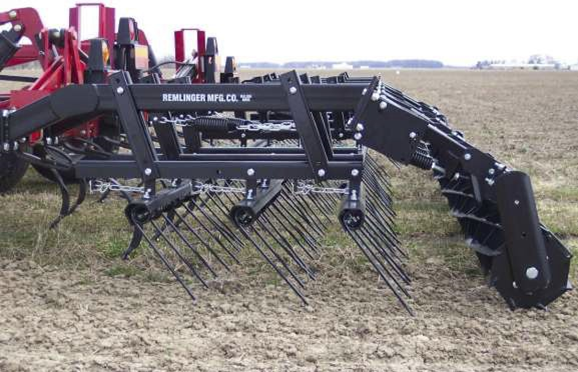

Einbock Tines
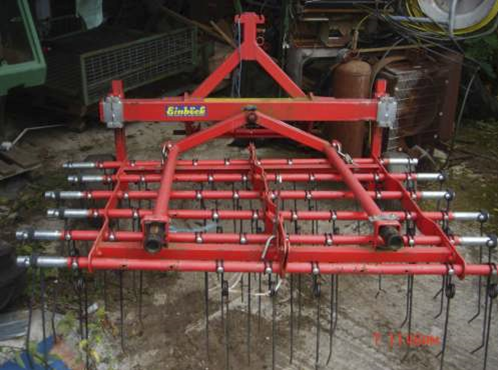

Heavy Tined Cultivators
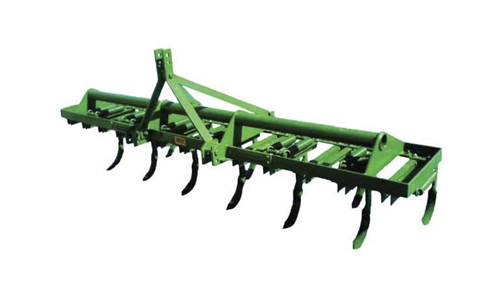

Chisel Ploughs

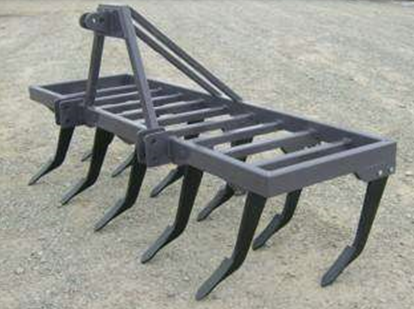
The chisel plough is a common tool to get deep tillage with limited soil disruption. The main function of this plough is to loosen and aerate the soils while leaving crop residue at the top of the soil. This plough can be used to reduce the effects of compaction and to help break up plough pan and hard pan. Unlike many other ploughs the chisel will not invert or turn the soil. This characteristic has made it a useful addition to no-till and limited-tillage farming practices which attempt to maximise the erosion prevention benefits of keeping organic matter and farming residues present on the soil surface through the year. Because of these attributes, the use of a chisel plough is considered by some to be more sustainable than other types of plough, such as the mould board plough.
CULTIVATORS
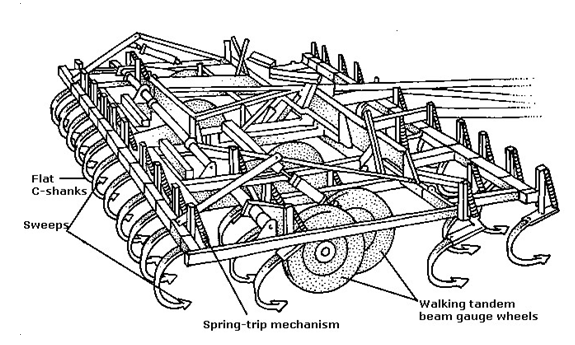
Rotary cultivators
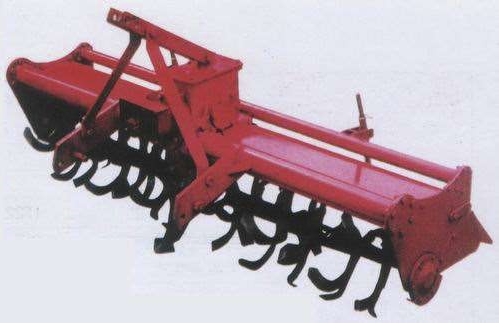
A rotary tiller, also known as a rototiller, rotavator, rotary hoe, power tiller, or rotary plough (in US: plow), is a motorised cultivatorthat works the soil by means of rotating tines or blades. Rotary tillers are either self propelled or drawn as an attachment behind either a two-wheel tractor or four-wheel tractor. For two-wheel tractors they are rigidly fixed and powered via couplings to the tractors' transmission. For four-wheel tractors they are attached by means of a three-point hitch and driven by a Power Take-Off(PTO).
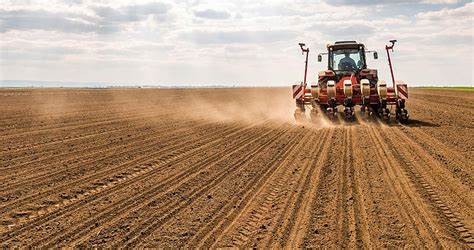
Bedformer – usually a rotary cultivator with crumbler roller and sideforming discs

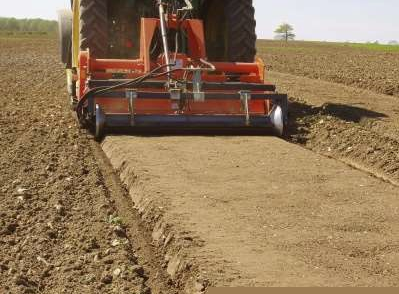
DISCS

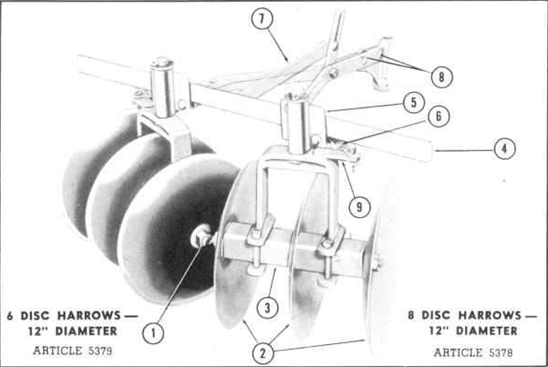


Harrows
A set of harrows is an implement for cultivating the surface of the soil. In this way it is distinct in its effect from the plough, which is used for deeper cultivation. They are commonly called harrows (plural) as they are used as a set. There are nominally three types of harrows; disc (disk), tineand chain.
Harrows were originally horse-drawn. In modern practice they are almost always tractor-mounted implements, drawn after the tractor, either trailed or mounted on the three-point linkage.
Harrowing is often carried out on fields to follow the rough finish left by ploughing operations. The purpose of this harrowing is generally to break up clods and lumps of soil and to provide a finer finish, a good tilth or soil structure that is suitable for seeding and planting operations. Such coarser
harrowing may also be used to remove weeds and to cover seed after sowing.
Power Harrow


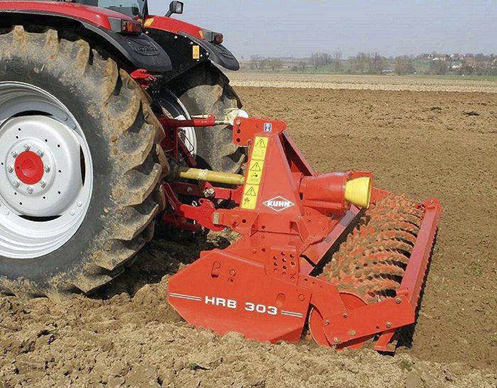

Power harrow, in which the cultivators are power-driven from the tractor rather than depending on its forward motion.
Rollers
Flat Rolls

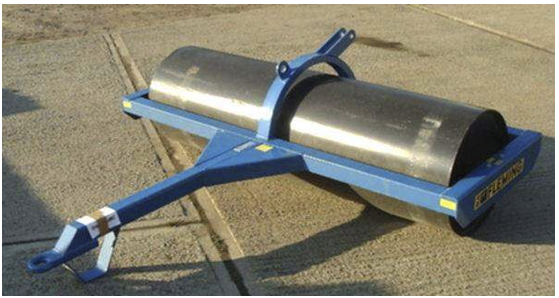
The roller is an agricultura tool used for flattening land or breaking up large clumps of soil, especially after ploughing. Typically, rollers are pulled by tractors or, prior to mechanisation, a team of animals such as horses or oxen.
Flatter land makes subsequent weed control and harvesting easier, and rolling can help to reduce moisture loss from cultivated soil. On grassland, rolling levels the land for mowing and compacts the
soil surface.
Cambridge Rolls


On tilled soil a one-piece roller has the disadvantage that when turning corners the outer end of the roller has to rotate much faster than the inner end, forcing one or both ends to skid. A one-piece
roller turned on soft ground will skid up a heap of soil at the outer radius, leaving heaps, which is counter-productive. Rollers are often made in two or three sections to reduce this problem, and the Cambridge roller overcomes it altogether by mounting many small segments onto one axle so that they can each rotate at local ground-speed.
The surface of rollers may be smooth, or it may be textured to help break up soil or to groove the final surface to reduce scouring from rain. Each segment of a Cambridge roller has a rib around its edge for this purpose.
Rollers may be ganged, or combined with other equipment such as mowers.
Subsoilers
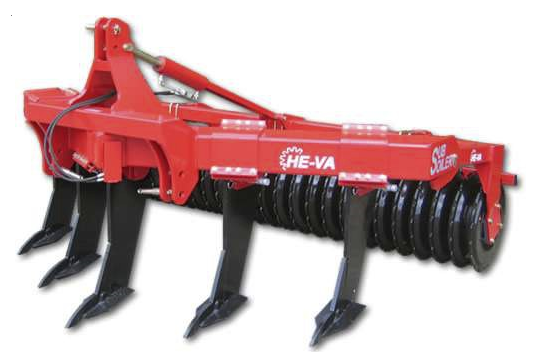

A subsoiler or mole plow is a tractor mounted implement used to loosen and break up soil at depths below the level of a traditional disk harrow or rototiller. Most tractor mounted cultivation tools will break up and turn over surface soil to a depth of 6" to 8" while a subsoiler will break up and loosen soil to twice those depths. Typically subsoiler mounted to a Compact Utility Tractor will reach depths of about 12" and typically have only one thin blade with a sharpened tip.
Shakerator
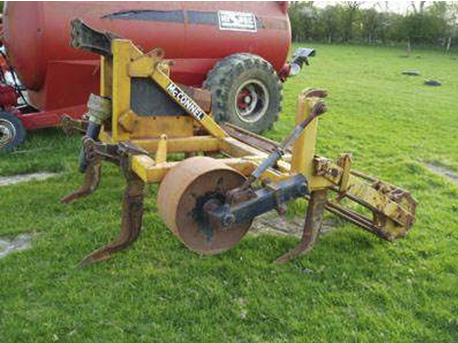

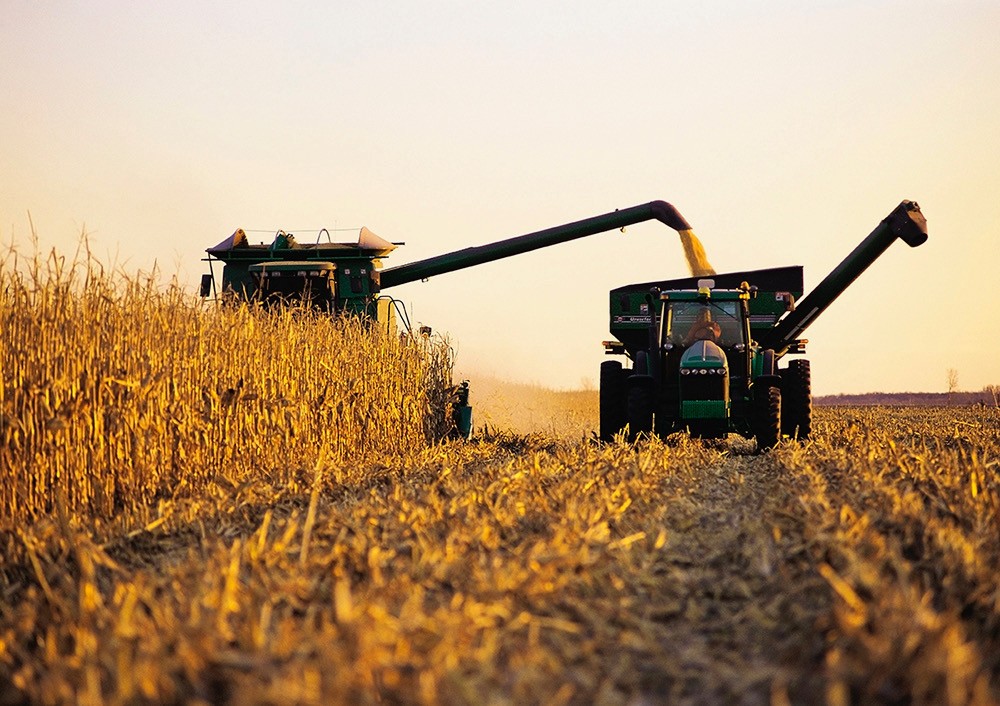
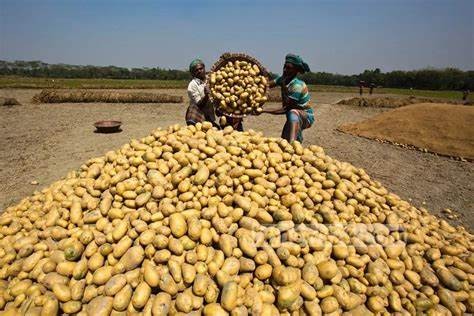
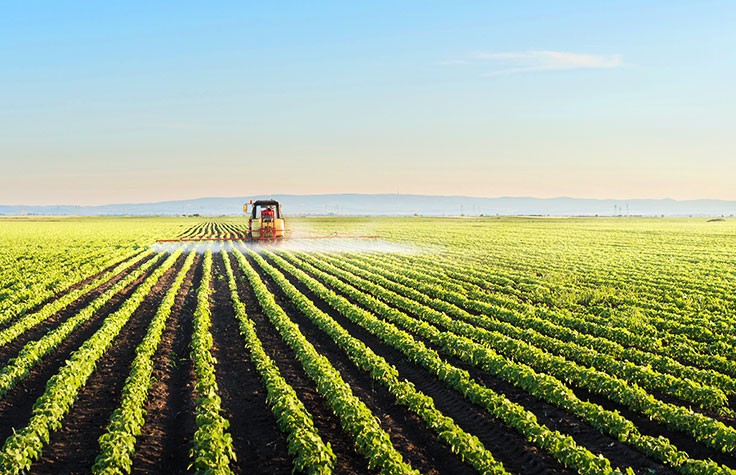
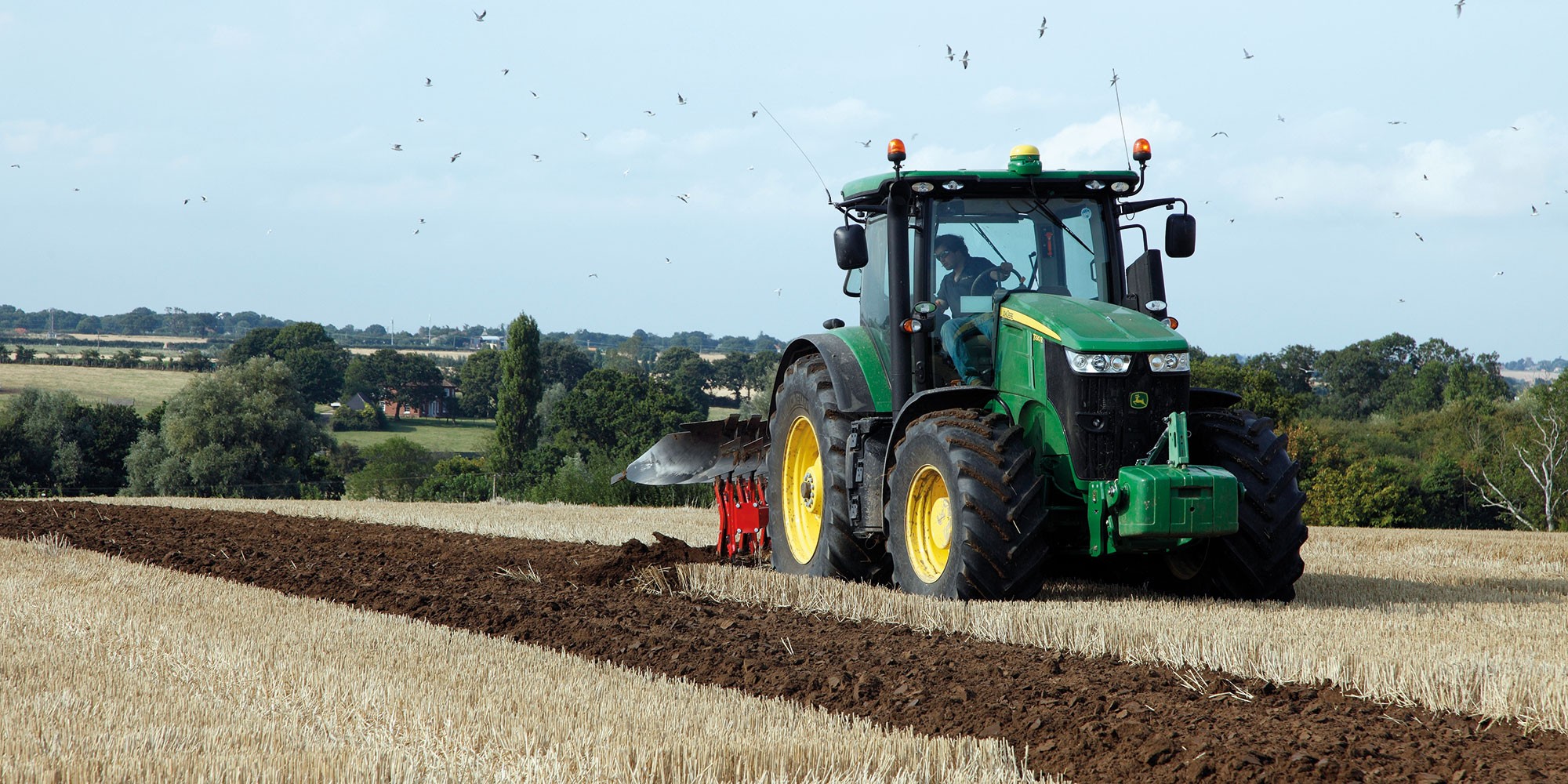
Credit to: Soil Association Future Growers Scheme
Soil Association is the charity that digs deeper to transform the way we eat, farm and care for our natural world. learn more about them at :
https://www.soilassociation.org
